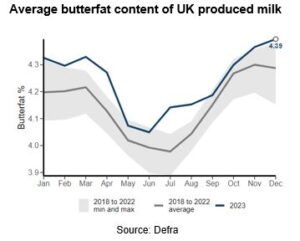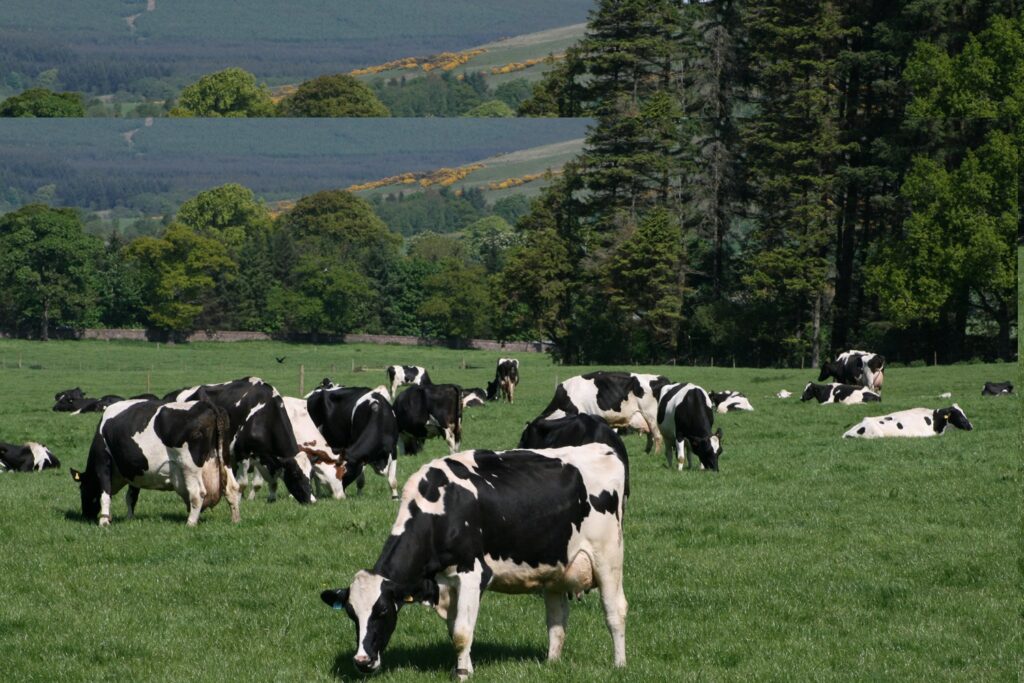MMN March 2024 – Rumen Microbes: Adapting to change
14 March 2024The rumen is a diverse and complex ecosystem of microbes comprising of bacteria, archaea, protozoa and fungi. These rumen microbes are vital in the digestion and breakdown of fibre, starch and protein in the ration. Maintaining this ecosystem is important to ensure the growth and activity of these rumen microbes; this done through a nutritionally balanced diet which optimises rumen pH. A particularly challenging time for rumen microbes is the change from the winter ration to spring grass at turnout.
The winter ration is typically very well balanced for protein and energy supply, along with sufficient fibre to maintain rumen health which suits the rumen microbes. However, spring grass can be variable on a day-to-day basis, particularly the sugar levels which can change depending on cloud cover and sunshine. Spring grass is highly digestible with low structural fibre compared to grass silage; it tends to have a lower dry matter but higher sugar and protein levels. These differences between spring grass and grass silage can pose challenges for the rumen microbes if grass is not introduced slowly.
The rumen microbes can take up to three weeks to adjust to a new diet; the fibre digesting microbes will digest the grass quicker due to its lower level of structural fibre. Similarly, spring grass is high in protein, typically this is rumen degradable protein (RDP) which is rapidly broken down by the microbes, rather than by-passing the rumen to be digested and absorbed in the small intestine. Due to these high levels of RDP, the microbes will struggle to utilise all of the protein available, so the excess is broken down into ammonia which is converted to urea in the liver and then excreted via urine and milk. This is why we often see a rise in milk urea at turnout.
The lower structural fibre and high sugars in grass can pose a challenge to rumen function which can lead to sub-acute ruminal acidosis (SARA). This occurs when the rumen pH has fallen below 5.8 for a period of 2 – 3 hours or more, resulting in reduced activity by the fibre digesting microbes following the excess production of acid. Fibre in the diet is important to provide “scratch factor” in the rumen, which is key for saliva production and good cudding rates; the optimum chews per cud is 65 to 75. Saliva production helps regulate rumen pH. However, when dietary fibre levels are low, the “scratch factor” is limited. This can reduce saliva production and cudding rates, potentially impacting rumen function, feed conversion efficiency and cow performance. Therefore, it is vital that the change from the winter ration to spring grass is gradual to allow rumen microbes sufficient time to adapt to the variations in fibre, sugar and protein levels.
The best way to give the rumen microbes time to adapt is to gradually increase the amount of time cows spend at grass, starting with cows out during the day for at least a week before going out 24 hours. Buffer feeding offers the opportunity to provide a balanced diet during the transition period. The buffer feed should provide high energy and low protein forage and concentrates, such as wholecrop silage, sugar beet pulp, soya hulls, and high fibre cakes as opposed to high starch cakes. These will complement the nutritive quality of the spring grass and slow down the rumen transit rate, allowing the microbes time to fully breakdown and digest the feed. Similarly, the addition of high fibre in the buffer feed will help reduce the risk of SARA, as well as a significant drop in butterfat levels in the milk post-turnout, which are typical in spring as shown below.

Giving the rumen microbes time to adjust to spring grass will benefit the overall function of the rumen and milking performance by the cow. Utilising buffer feeding during the transition period is key for a smooth adaption of microbes whilst reducing the impact on rumen function and milk output. If you are considering buffer feeding this spring, speak to your nutritionist for further advice.
cara.campbell@sac.co.uk; 01586 552502
Sign up to the FAS newsletter
Receive updates on news, events and publications from Scotland’s Farm Advisory Service

